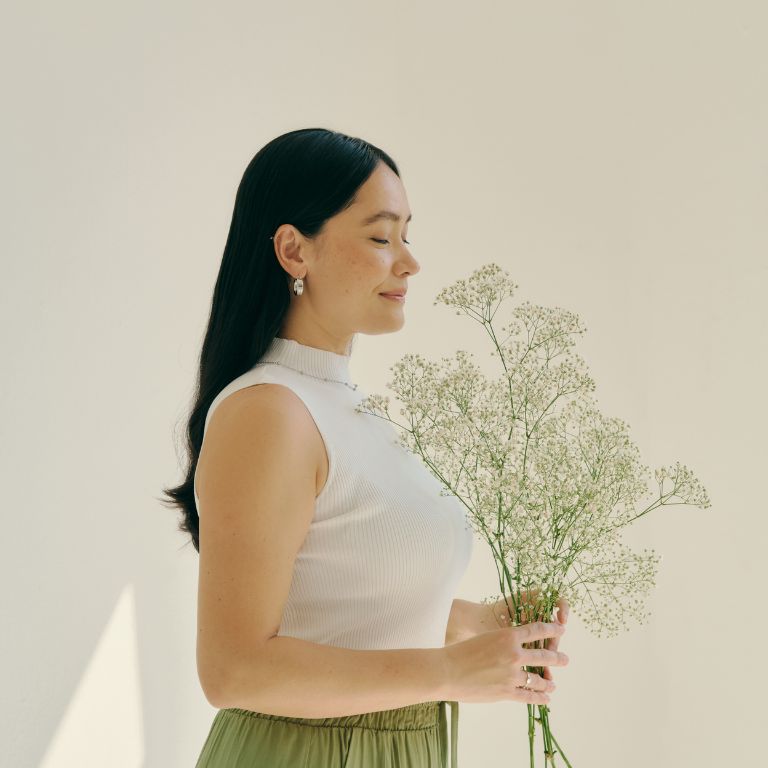Minimalism has an appeal to simplicity and the reduction of excess, while mindfulness advocates for being present in the current moment. Both minimalism and mindfulness, though distinct in their approaches, share a focus on the essential.
In recent years, we have witnessed a growing popularity of minimalism and mindfulness as people seek ways to simplify life and find refuge from the madness that modern life has become. In this post, we will discuss the differences between these two concepts and how they can help improve people’s quality of life.
MINIMALISM AND MINDFULNESS
Minimalism goes beyond aesthetics and design; it is an intentional way of life that seeks to simplify and reduce excess in all areas of life. With minimalism, people seek to free themselves from the grip of excessive consumerism and find satisfaction in having fewer things. This can manifest in various forms, from organizing physical spaces to reducing the number of social commitments and even eliminating harmful habits.
Meanwhile, mindfulness is an ancient practice that has gained prominence in modern society due to its numerous benefits for mental and emotional well-being. At its core, mindfulness involves full awareness of the present moment, without judgment or distraction. Rather than being caught up in thoughts about the past or worries about the future, mindfulness practitioners learn to be completely present, observing their thoughts and emotions as they arise.
These two concepts may seem distinct at first glance, but they share a fundamental affinity in the pursuit of simplicity and awareness. While minimalism focuses on external simplification, reducing material excess and unnecessary commitments, mindfulness promotes internal simplification, allowing people to detach from unnecessary thoughts and emotions. Together, these principles form a more holistic approach to living a life with greater meaning and authenticity.
MINIMALISM AND MENTAL CLARITY
The connection between minimalism and mental clarity is profound because adopting a minimalist approach to life involves seeking to reduce the excess of material things, commitments, and distractions that often cloud the mind. Simplicity becomes the mantra, and this external simplification often leads to a sense of lightness and mental freedom.
As we rid ourselves of the weight of excess, we find space to breathe and reflect. Consciously reducing the number of things and commitments not only frees up physical space but also clears the mind, allowing us to focus on what truly matters. This process of eliminating the superfluous is a practice of detachment, a voluntary renunciation of what does not contribute to happiness and well-being.
Furthermore, the pursuit of mental clarity goes beyond material simplification; it also involves purifying thoughts and emotions, a task that aligns closely with the principles of mindfulness. By practicing mindfulness, we learn to observe our thoughts without getting caught up in them, thus cultivating a calmer and more balanced mind. This awareness of the present moment allows us to let go of unnecessary concerns about the past or future, leading to a renewed sense of inner peace.
Therefore, the relationship between minimalism and mental clarity is a two-way street: as we simplify our external life, we also promote a clearer and more focused mind. These two principles work in harmony to free us from mental overload and empower us to live with more intention and purpose.
DETACHMENT AND ACCEPTANCE
Detachment, a cornerstone of minimalism, is also related to the practice of acceptance, which is fundamental in mindfulness. Both concepts invite us to let go of resistance and adopt a posture of receptivity toward life and the world around us.
Minimalism teaches us to free ourselves from excessive attachment to material things and social status, recognizing that our happiness is not inherently tied to these things. On the other hand, mindfulness invites us to fully accept each moment, whether pleasant or challenging.
The relationship between detachment and acceptance is rooted in the idea that true freedom lies in the ability to detach ourselves from society’s expectations and demands, as well as our own pressures and expectations. By freeing ourselves from the weight of attachment, we find a sense of lightness and inner peace that is truly liberating. This process of detachment does not imply completely giving up our possessions or desires, but rather cultivating a healthier and more balanced relationship with them.
The practice of acceptance in mindfulness complements detachment by teaching us to embrace each moment with an open and compassionate mind. Instead of resisting what we cannot control, we learn to greet reality with kindness and understanding. This attitude of acceptance does not imply passivity but rather recognizing the true nature of things and responding to them with wisdom and discernment. By ceasing to fight against the natural flow of life, we find tranquility regardless of external circumstances.
Therefore, the relationship between detachment and acceptance reminds us that true freedom and happiness are not found in the relentless pursuit of more things, but rather in the ability to find contentment and peace within ourselves. By practicing detachment and acceptance, we open up space for a more balanced life, one filled with meaning.
REDUCTION OF STRESS
Modern life often overwhelms us with a barrage of commitments, expectations, and distractions, which can lead to high levels of stress and anxiety. However, both minimalism and mindfulness offer powerful antidotes to these modern afflictions. By simplifying life and cultivating mindful awareness of the present moment, we can find a greater sense of calm and tranquility.
Minimalism encourages us to question the necessity of each object, commitment, or activity in our lives, allowing us to shed the weight of excess and focus on what truly matters. By reducing the quantity of material things and commitments, we eliminate potential sources of stress and open ourselves up to a simpler, less burdened life. This external simplification often translates into a feeling of relief and lightness.
In turn, mindfulness teaches us to confront stress head-on rather than avoiding or ignoring it. By cultivating mindful awareness of the present moment, we learn to recognize and accept our emotions and thoughts without being overwhelmed by them. This practice of being present enables us to respond to stress in a calmer and more balanced manner, rather than reacting impulsively or in a disoriented way. Over time, this can lead to greater emotional resilience and a significant reduction in stress and anxiety levels.
FOCUS ON THE ESSENCE
Focus on the essence is a central principle of both minimalism and mindfulness, and this emphasis on what truly matters can be transformative and liberating in everyday life. Both minimalism and mindfulness invite us to question social status and identify what truly matters in our lives, identifying and prioritizing the essential is key to achieving a fuller life.
Minimalism reminds us that many of the things we own and strive to attain are often superfluous. By letting go of excess, we can direct our attention to what truly brings value and meaning to life genuine relationships, enriching experiences, and the pursuit of passions and purposes.
Likewise, mindfulness helps us discern between what is urgent and what is important. By cultivating mindful awareness of the present moment, we learn to recognize patterns of thought and behavior that may lead us astray from what truly matters. Therefore, making more conscious decisions aligned with values and goals, rather than automatically reacting to external pressures, is one of the teachings of mindfulness.
Conclusion
The relationship between minimalism and mindfulness is one of concepts that, although distinct in their approach, share essential values that can deeply and meaningfully enrich and simplify life.
From the pursuit of simplicity and mental clarity to detachment and acceptance, both principles invite us to live with more intention and purpose, directing our attention to what truly matters. Helping to reduce stress and anxiety, we can find a greater sense of calm and tranquility in the chaos of the modern world.
Have you had any experience with minimalism and mindfulness? Share your story in the comments and inspire others!








